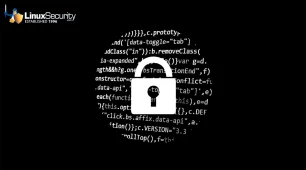SuSE: 2004-042: various kernel problems Security Update
Summary
-----BEGIN PGP SIGNED MESSAGE-----
______________________________________________________________________________
SUSE Security Announcement
Package: kernel
Announcement-ID: SUSE-SA:2004:042
Date: Wednesday, Dec 1st 2004 15:00 MEST
Affected products: 8.1, 8.2, 9.0, 9.1, 9.2
SUSE Linux Enterprise Server 8, 9
SUSE LINUX Desktop 1.0
Novell Linux Desktop 9
Vulnerability Type: local and remote denial of service
Severity (1-10): 7
SUSE default package: yes
Cross References: CAN-2004-0883
CAN-2004-0949
CAN-2004-1070
CAN-2004-1071
CAN-2004-1072
CAN-2004-1073
CAN-2004-1074
Content of this advisory:
1) security vulnerability resolved:
- kernel remote and local denial of service problems
problem description
2) solution/workaround
3) special instructions and notes
4) package location and checksums
5) pending vulnerabilities, solutions, workarounds:
- see SUSE Security Summary Report
6) standard appendix (further information)
______________________________________________________________________________
1) problem description, brief discussion
The Linux kernel is the base of the SUSE Linux system.
Several security problems have been found and addressed by
the SUSE Security Team. The following issues are present
in all SUSE Linux based products.
- Several remote denial of service conditions have been found in
the smbfs file system, reported by Stefan Esser.
The vulnerability could be used by a hostile SMB server (or an
attacker injecting packets into the network) to crash the clients
kernel.
These issues have been assigned the Mitre CVE IDs CAN-2004-0883 and
CAN-2004-0949.
We thank Stefan Esser for reporting this issue and providing patches.
- Paul Starzetz of isec.pl found several missing boundary checks
in the ELF loader routines of the Linux kernel which could
potentially lead a local attacker to gain root privileges by using
handmade ELF binaries. These issues have been assigned the Mitre
CVE IDs CAN-2004-1070,CAN-2004-1071,CAN-2004-1072, and CAN-2004-1073.
We thank Paul for reporting this issue and Chris Wright for providing
a patch to fix the issue.
- Handcrafted a.out binaries could be used to trigger a local
denial of service condition in both 2.4 and 2.6 Linux kernels, allowing
a local attacker to render the system unusable.
Fixes for this problem were done by Chris Wright.
This issue has been assigned the Mitre CVE ID CAN-2004-1074.
We wish to thank Chris for providing patches.
- SUSE Linux 9.1 and SUSE Linux Enterprise Server 9 now contain
stricter checks what commands you can send to read-only opened
CD devices. This way local attackers only having read access to
the device will not be able to destroy the firmware of SCSI related
devices.
This update will break the k3b and the dvd+rw-tools packages.
We have released fixed versions of those packages.
- The SUSE Linux 8.1, 8.2, and 9.0 and the SUSE Linux Desktop 1.0
kernel were missing the kNFSD remote denial of service fix. The
respective fixes are now in the released kernels.
Also, the following critical bugs were fixed by this update:
- A very small race condition on SMP systems with more than 4GB of
memory that could expose foreign memory pages was found and fixed
by Andrea Arcangeli of SUSE.
- On SUSE Linux Enterprise Server 9 a memory corruption in the NFS
readdirplus command could lead to kernel crashes and potentially
corruption of data on disk. This problem was fixed.
- On SUSE Linux 9.2 the "dazuko" kernel module of the "antivir" RPM
package caused problems with programs using Linux capabilities.
The module was fixed.
- A security fix for buffer overflows in the decnet protocol
driver was incorrect and caused kernel crashes.
2) solution/workaround
There is no workaround, please install the fixed kernels.
3) special instructions and notes
SPECIAL INSTALL INSTRUCTIONS:
============================= The following paragraphs will guide you through the installation
process in a step-by-step fashion. The character sequence "****"
marks the beginning of a new paragraph. In some cases, the steps
outlined in a particular paragraph may or may not be applicable
to your situation.
Therefore, please make sure to read through all of the steps below
before attempting any of these procedures.
All of the commands that need to be executed are required to be
run as the superuser (root). Each step relies on the steps before
it to complete successfully.
**** Step 1: Determine the needed kernel type
Please use the following command to find the kernel type that is
installed on your system:
rpm -qf /boot/vmlinuz
Following are the possible kernel types (disregard the version and
build number following the name separated by the "-" character)
k_deflt # default kernel, good for most systems.
k_i386 # kernel for older processors and chip sets
k_athlon # kernel made specifically for AMD Athlon(tm) family processors k_psmp # kernel for Pentium-I dual processor systems
k_smp # kernel for SMP systems (Pentium-II and above)
k_smp4G # kernel for SMP systems which supports a maximum of 4G of RAM
kernel-64k-pagesize
kernel-bigsmp
kernel-default
kernel-smp
**** Step 2: Download the package for your system
Please download the kernel RPM package for your distribution with the
name as indicated by Step 1. The list of all kernel rpm packages is
appended below. Note: The kernel-source package does not
contain a binary kernel in bootable form. Instead, it contains the
sources that the binary kernel rpm packages are created from. It can be
used by administrators who have decided to build their own kernel.
Since the kernel-source.rpm is an installable (compiled) package that
contains sources for the linux kernel, it is not the source RPM for
the kernel RPM binary packages.
The kernel RPM binary packages for the distributions can be found at the
locations below .
8.1/rpm/i586
8.2/rpm/i586
9.0/rpm/i586
9.1/rpm/i586
9.2/rpm/i586
After downloading the kernel RPM package for your system, you should
verify the authenticity of the kernel rpm package using the methods as
listed in section 3) of each SUSE Security Announcement.
**** Step 3: Installing your kernel rpm package
Install the rpm package that you have downloaded in Steps 3 or 4 with
the command
rpm -Uhv --nodeps --force
References



















